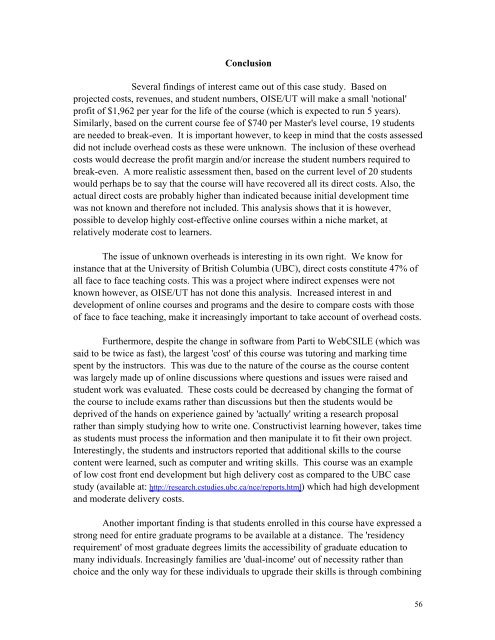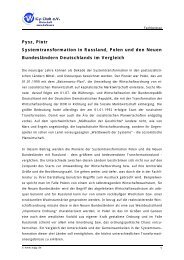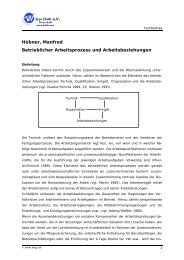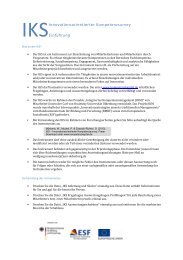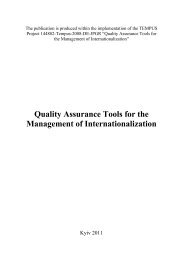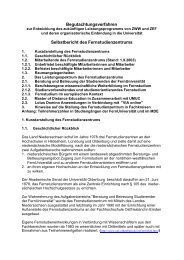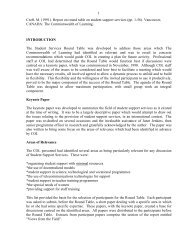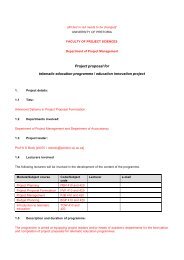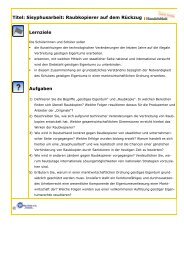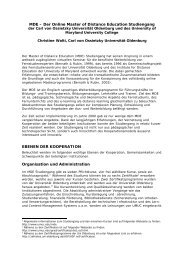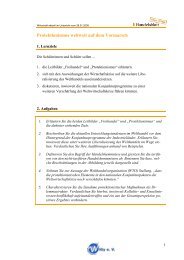Assessing the Costs and Benefits of Telelearning: A Case Study ...
Assessing the Costs and Benefits of Telelearning: A Case Study ...
Assessing the Costs and Benefits of Telelearning: A Case Study ...
Create successful ePaper yourself
Turn your PDF publications into a flip-book with our unique Google optimized e-Paper software.
Conclusion<br />
Several findings <strong>of</strong> interest came out <strong>of</strong> this case study. Based on<br />
projected costs, revenues, <strong>and</strong> student numbers, OISE/UT will make a small 'notional'<br />
pr<strong>of</strong>it <strong>of</strong> $1,962 per year for <strong>the</strong> life <strong>of</strong> <strong>the</strong> course (which is expected to run 5 years).<br />
Similarly, based on <strong>the</strong> current course fee <strong>of</strong> $740 per Master's level course, 19 students<br />
are needed to break-even. It is important however, to keep in mind that <strong>the</strong> costs assessed<br />
did not include overhead costs as <strong>the</strong>se were unknown. The inclusion <strong>of</strong> <strong>the</strong>se overhead<br />
costs would decrease <strong>the</strong> pr<strong>of</strong>it margin <strong>and</strong>/or increase <strong>the</strong> student numbers required to<br />
break-even. A more realistic assessment <strong>the</strong>n, based on <strong>the</strong> current level <strong>of</strong> 20 students<br />
would perhaps be to say that <strong>the</strong> course will have recovered all its direct costs. Also, <strong>the</strong><br />
actual direct costs are probably higher than indicated because initial development time<br />
was not known <strong>and</strong> <strong>the</strong>refore not included. This analysis shows that it is however,<br />
possible to develop highly cost-effective online courses within a niche market, at<br />
relatively moderate cost to learners.<br />
The issue <strong>of</strong> unknown overheads is interesting in its own right. We know for<br />
instance that at <strong>the</strong> University <strong>of</strong> British Columbia (UBC), direct costs constitute 47% <strong>of</strong><br />
all face to face teaching costs. This was a project where indirect expenses were not<br />
known however, as OISE/UT has not done this analysis. Increased interest in <strong>and</strong><br />
development <strong>of</strong> online courses <strong>and</strong> programs <strong>and</strong> <strong>the</strong> desire to compare costs with those<br />
<strong>of</strong> face to face teaching, make it increasingly important to take account <strong>of</strong> overhead costs.<br />
Fur<strong>the</strong>rmore, despite <strong>the</strong> change in s<strong>of</strong>tware from Parti to WebCSILE (which was<br />
said to be twice as fast), <strong>the</strong> largest 'cost' <strong>of</strong> this course was tutoring <strong>and</strong> marking time<br />
spent by <strong>the</strong> instructors. This was due to <strong>the</strong> nature <strong>of</strong> <strong>the</strong> course as <strong>the</strong> course content<br />
was largely made up <strong>of</strong> online discussions where questions <strong>and</strong> issues were raised <strong>and</strong><br />
student work was evaluated. These costs could be decreased by changing <strong>the</strong> format <strong>of</strong><br />
<strong>the</strong> course to include exams ra<strong>the</strong>r than discussions but <strong>the</strong>n <strong>the</strong> students would be<br />
deprived <strong>of</strong> <strong>the</strong> h<strong>and</strong>s on experience gained by 'actually' writing a research proposal<br />
ra<strong>the</strong>r than simply studying how to write one. Constructivist learning however, takes time<br />
as students must process <strong>the</strong> information <strong>and</strong> <strong>the</strong>n manipulate it to fit <strong>the</strong>ir own project.<br />
Interestingly, <strong>the</strong> students <strong>and</strong> instructors reported that additional skills to <strong>the</strong> course<br />
content were learned, such as computer <strong>and</strong> writing skills. This course was an example<br />
<strong>of</strong> low cost front end development but high delivery cost as compared to <strong>the</strong> UBC case<br />
study (available at: http://research.cstudies.ubc.ca/nce/reports.html ) which had high development<br />
<strong>and</strong> moderate delivery costs.<br />
Ano<strong>the</strong>r important finding is that students enrolled in this course have expressed a<br />
strong need for entire graduate programs to be available at a distance. The 'residency<br />
requirement' <strong>of</strong> most graduate degrees limits <strong>the</strong> accessibility <strong>of</strong> graduate education to<br />
many individuals. Increasingly families are 'dual-income' out <strong>of</strong> necessity ra<strong>the</strong>r than<br />
choice <strong>and</strong> <strong>the</strong> only way for <strong>the</strong>se individuals to upgrade <strong>the</strong>ir skills is through combining<br />
56


